Rice is one of the most popular and vital grains in the world. But can you eat rice if you have fatty liver?
We’re going to talk about that in today’s article, covering the regular white rice, as well as brown rice and black rice which are usually considered healthier alternatives.
Contrary to popular belief – that is, rice is a ‘bad carb’ and can make you fat – eating the right type of rice is good for fatty liver and is actually helpful in preventing obesity.
There are many things to have in mind here though and I will cover them all in today’s article, to make sure that if you do enjoy eating rice and suffer from NAFLD, you consume the right stuff and the right amounts.
Eating rice if you have a fatty liver
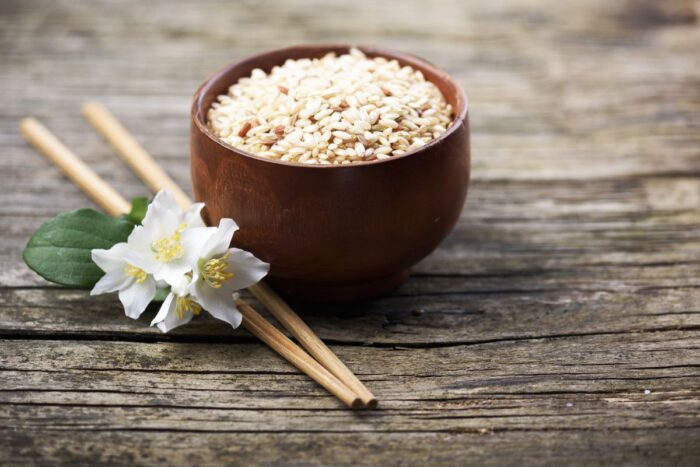
Rice is naturally gluten-free. It also has a minimal amount of cholesterol, sodium, and fat (although nutritional values depend on the type used).
However, if you’re a certified rice-eater, like me, (c’mon, who can say no to sushi rolls?), you may have to reconsider eating white rice if you have fatty liver.
Rice comes in many different types with each having its own special properties. But not all are friendly to your liver. For example, eating large quantities of white rice may present potential health risks like type 2 diabetes.
All these because white rice is highly processed and very high in carbs. For example, a cup of cooked white rice contains almost as many carbs as three slices of white bread, which is also not recommended if you have a fatty liver.
(Source: via the US Department of Agriculture nutrition info of white rice & white bread).
On top of that, white rice has a lot fewer nutrients (like fiber, vitamins and minerals) than brown rice or black rice.
If you can’t have a satisfying meal without rice, adding cooked rice to your fatty liver diet plan is still possible only if you choose the right type and variety.
Let’s take into consideration this study conducted on obese Zucker rats. A brown rice diet for 10 weeks helped prevent NAFLD in these rats. While this study is made on rats and not humans, it still proves that some rice varieties are safer than others.
What Kind of Rice Can You Eat with a Fatty Liver?
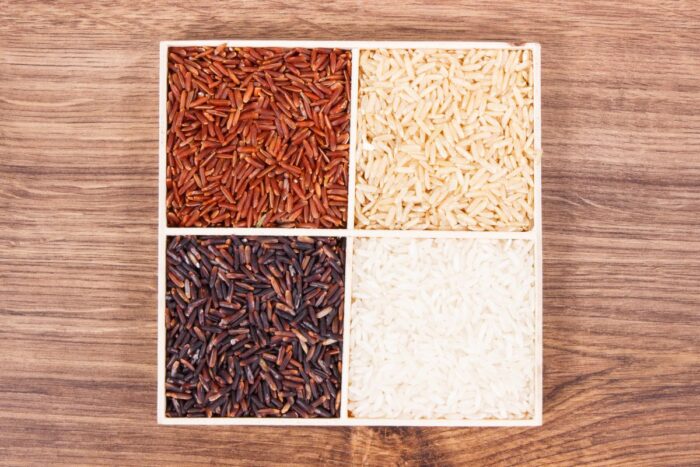
White rice is definitely out of the questions if you have a fatty liver. It has lots of carbs and is high in calories, and these are bad for the liver. It also has minimal amounts of mineral and vitamins, meaning that it’s not really nutritious.
However, not all rice is equal. The best type of rice to eat if you suffer from a fatty liver is brown rice aka whole grain rice. Black rice is also a whole grain variety, making it safe to eat. But both types should be consumed in moderation.
We all know too much of anything is good for nothing. And an excess of calories from any food, that includes rice, will definitely lead to weight gain.
A healthy meal for NAFLD patients includes protein, healthy fat, and complex carbohydrates. And the latter can be found in the equivalent of a ¼ cup of brown rice.
Brown rice has more nutrients than white rice. Imagine the white bread you see in the bakery.
It may be softer and taste better, but it is made with a lot of added chemicals and additives which lessens its nutritional value and which might even make it unhealthy.
For maximum nutrition, choose brown rice – especially if you suffer from NAFLD. And still eat it in moderation.
So… to recap (and learn more):
Is White Rice Good for Fatty Liver?
No, you should not eat white rice if you have a fatty liver. While it is a rich source of carbohydrates that help fuel your energy levels, especially when exercising, it has too many carbohydrates and is not nutritious.
It is also considered a risk factor for type 2 diabetes, which is in turn a common risk factor for fatty liver disease. So you have to completely take it off your grocery list!
On the brighter side, a study conducted by the Harvard School of Public Health showed that replacing white rice with brown rice lowers the risk of type 2 diabetes.
Is Brown Rice Good for Fatty Liver?
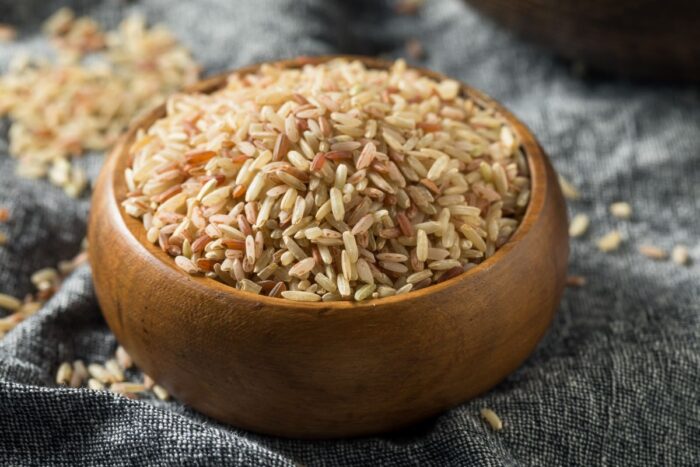
As mentioned before, you can eat brown rice if you have fatty liver. It has more nutrients, including minerals, vitamins and fiber, as well as complete amino acid content.
All this is because you’re eating the whole grain which did not undergo any refining process, like it is the case of white rice.
Brown rice is high in fiber content. Fiber is essential to our digestive health. It aids weight loss, which is useful if you have fatty liver.
It’s also high in antioxidants, which are important in cleansing the toxins inside our body and allow biological processes to occur smoothly.
Another mineral that is present in brown rice and plays a major role for the liver is selenium. Selenium aids in our body’s antioxidant activity. It helps activate the enzyme, glutathione peroxidase, which helps the liver detoxify and neutralize toxins.
Sometimes, excess fats lead to inflammation of our liver. One of the components of brown rice is a potent anti-inflammatory agent. This is helpful in reversing fatty liver or preventing more damage to the liver.
Eating rice is something I enjoy doing and I think it completes some dishes nicely. I personally use brown rice to complement my fatty liver diet plan, making sure to eat in moderation.
Is Black Rice Good for Fatty Liver?
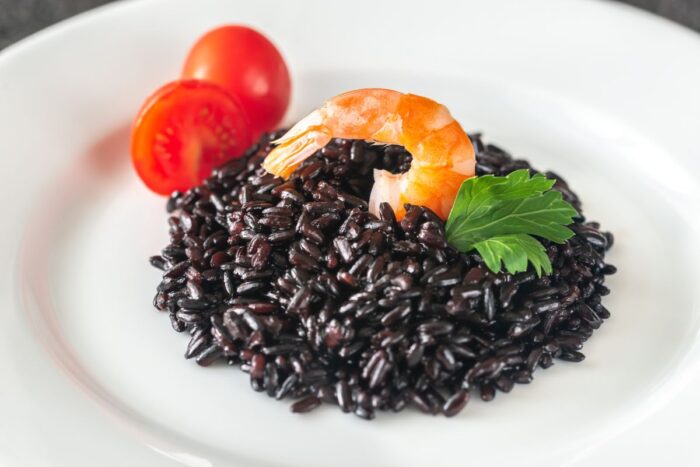
Similar to brown rice, black rice can be eaten if you have a fatty liver. It is a type of rice that has higher antioxidants, protein, iron, and fiber than brown and white rice. It also has a low glycemic index which makes it an ideal rice for a fatty liver diet.
So if you don’t like how whole grain rice tastes when compared to the white rice we’re most likely used to eating, you can try black rice also. It is a completely different experience!
I find it really yummy and actually prefer it to brown rice, as it has a better taste and a softer texture. But at the same time, I don’t feel it goes well with any type of food… so I use to mix and match.
As a fun fact, Black rice was once considered a special food for the nobles and royalties only. This is why it is also known as “forbidden rice”.
Today, it can be found at any health food stores, Asian grocery stores, and even on Amazon. Here are some examples below – you can get them on Amazon (affiliate links):
- Lotus Foods Forbidden Rice – is 100% organic, gluten-free, and vegan. Lotus Foods is one of the first companies to introduce black rice in the US.
- Elan Organic Ancient Black Rice – a delicious, nutty flavored rice that is all-natural and sulfite-free. It can also be used in soups.
- RiceSelect Discoveries Black Rice – is low-fat, cholesterol-free, and suitable for vegans and vegetarians. Perfect for stir-fries and curry.
Just like with brown rice, you should only have black rice every now and then and in smaller quantities. I wouldn’t eat more than a quarter of a cup per meal.
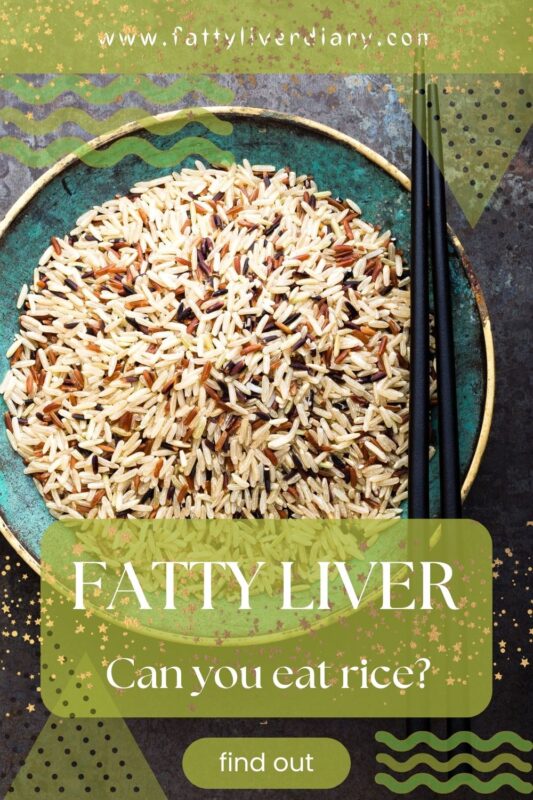
Conclusion
Whole grains like brown and black rice, are the healthier and better options to help reverse fatty liver – and rice is included in this statement. It is also beneficial for those that have diabetes to help lower their blood sugar.
I personally switched to using brown rice and black rice instead of white and it’s the best decision I made not only for my liver but for my overall health.
The key here is to have a balanced diet – you can check my meal plan for a week here to see what options you have. Eat small healthy meals every 2-3 hours. Don’t overeat anything. And talk to your doctor or nutritionist before you start a diet plan.

I was diagnosed with a fatty liver back in 2014 and managed to reverse it by mid-2015. Since then, I’ve been studying it, continuously updating my knowledge with the latest scientific findings and practical approaches to give others the help they need to reverse their condition.
My approach to managing fatty liver is holistic, balancing scientifically-backed information with real-life, practical advice based on personal, direct experience.
I am also the admin of the Fatty Liver Support Group on Facebook and the Fatty Liver Subreddit.


Hello, how much grams of brown rice maximum should you be eating daily? What is the total amount of carbs? with and without vegetables?
I have answered these questions here: https://www.fattyliverdiary.com/fatty-liver-and-sugar-how-much-to-eat-per-day/